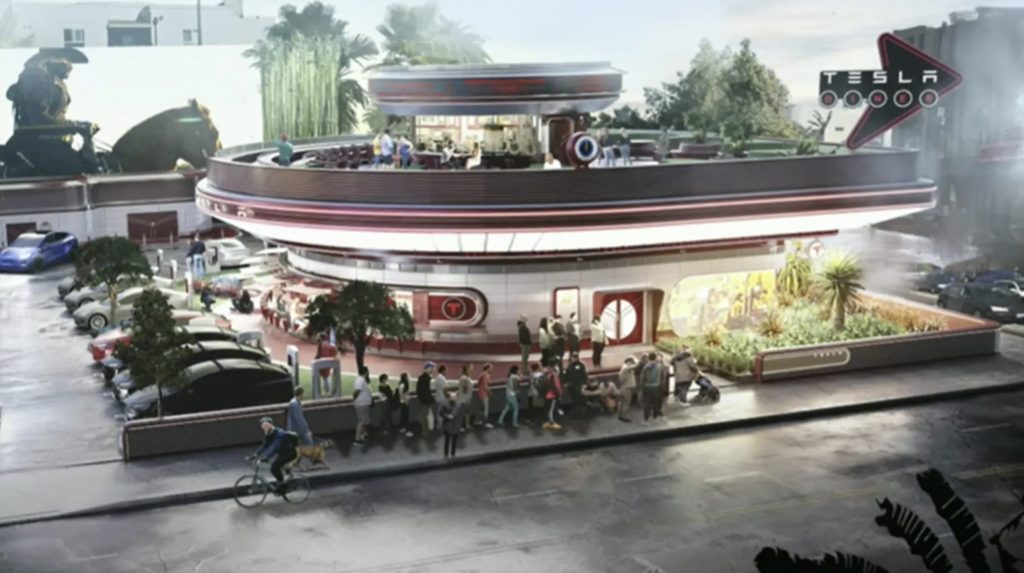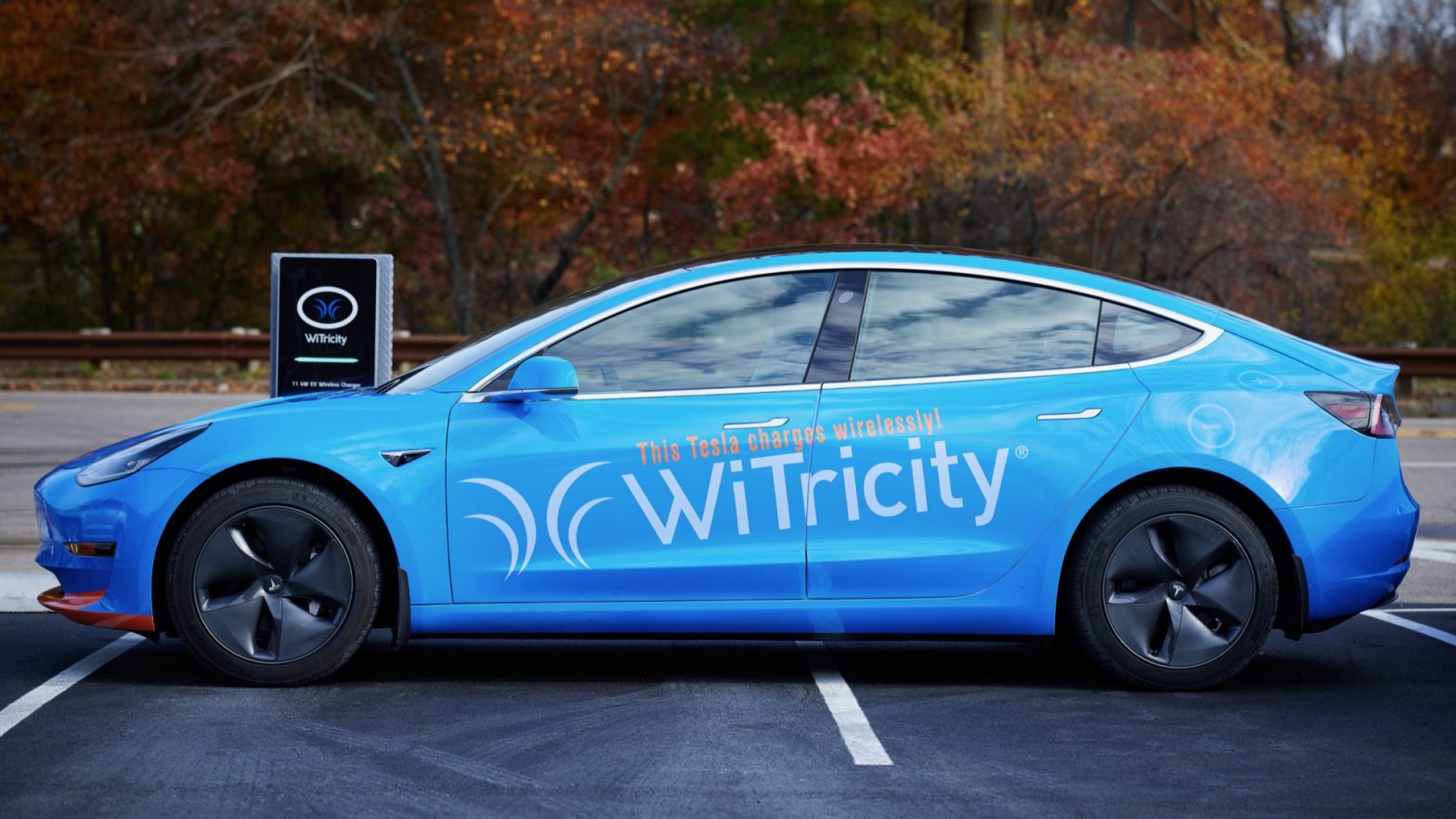Tesla did not mention the potential wireless EV charging release date or even whether the technology may be available to owners. Yet, there is undoubtedly a good reason the company chose to include it among looks into its charging future given its promise of daily charging without the need for handle charge ports both day and night.
Tesla’s head of global charging infrastructure Rebecca Tinucci concluded the Charging section of the presentation by saying, “We’ve got to grow our infrastructure, and sure, we want to power it via renewable sources. But since we’re Tesla, we also want to make sure that our attention is still on offering truly unique charging experiences.

Tesla diner and wireless charging pad
The Southern California cafe and Supercharger station that Tesla has long teased were depicted on one side of the presentation slide in what looks to be a fresh depiction. There was a Tesla Model S in a garage on the other side of the slide, next to a wireless charging pad. It’s also a crucial technological element for autonomous vehicles. It’s a more sophisticated solution than the earlier snake charger prototype Tesla demonstrated.
Related Article: Germany To Test Wireless EV Charging On The Go
Not Just Tesla Has Been Highlighting Technology Lately
One of the top enterprises specializing in inductive EV charging for cars, WiTricity, will not say if the Tesla charging example is theirs or a licensed version of their technology. The Genesis GV60 in its native market of South Korea is the sole OEM industrial application for which it is the only firm outside of China to provide the technology. For demonstration considerations, the company has nonetheless equipped a Tesla Model 3 and a Ford Mustang Mach-E with wireless charging technology.
Stellantis‘ Ram truck line teased an inductive charging robot at CES in January. It would enable hands-free charging without reserving the same space every day. In 2025 or 2026, WiTricity forecasts a turning point in the market as more high-end. Eventually, mass-market vehicles will start to offer the technology as a feature or an option. But, if Tesla broadly uses the technology at that time, it may assist in drastically reducing the cost of entry for the technology.
